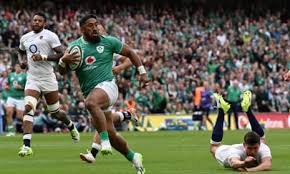
ireland rugby
The Origins of Irish Rugby
The history of Ireland Rugby begins in the mid-19th century, when rugby union was introduced to Ireland by British military and civil institutions. The Irish Rugby Football Union (IRFU) was formed in 1879, establishing a central governing body that would go on to represent the entire island—both the Republic of Ireland and Northern Ireland. Ireland played its first international rugby match in 1875 against England, marking the beginning of a rivalry that still thrives today.
Unity in a Divided Land
One of the most remarkable aspects of Irish rugby is its role as a symbol of unity. Despite Ireland’s political division, the national team represents both North and South under one flag and one anthem—“Ireland’s Call”. This unified approach is rare in world sports, particularly given the historical conflict on the island. The team’s consistent performance and composed leadership make it a source of national pride for all communities across the country.
The Rise Through the Home Nations and Five Nations
Ireland first competed in the Home Nations Championship in the late 1800s, battling other teams like England, Scotland, and Wales. In the 20th century, the tournament became the Five Nations, and later, the Six Nations Championship with the addition of France and Italy. Though Ireland had limited early success, standout players like Jack Kyle and Tony O’Reilly elevated the squad into serious contenders.
Building Through Provincial Power
Ireland’s national strength is deeply tied to its four provincial teams: Leinster, Munster, Ulster, and Connacht. These teams compete in the United Rugby Championship (URC) and European Rugby Champions Cup, producing top-level players and creating a competitive domestic scene. Provinces like Leinster have been especially dominant in recent years, developing world-class talent like Johnny Sexton and Garry Ringrose.
Embracing Professionalism
Rugby turned professional in 1995, and the IRFU responded with a centralized player management system that is now seen as a model globally. This system keeps top players within Ireland, allowing the union to control game time, recovery, and development. Player welfare became a top priority, ensuring longer careers and peak performances in international fixtures. Central contracts allowed Ireland to manage talent like Brian O’Driscoll, Paul O’Connell, and Rob Kearney in a coordinated and strategic way.
Grand Slams and Modern Success
Ireland’s major breakthrough came in 2009, when under Declan Kidney, the team captured its first Grand Slam since 1948. Led by Brian O’Driscoll and Ronan O’Gara, the squad achieved perfection in the Six Nations Championship. A new era began with Joe Schmidt, who brought precision and tactical brilliance to the team. Under his leadership, Ireland won the Six Nations in 2014, 2015, and the Grand Slam again in 2018.
The Golden Year: 2018
The year 2018 is considered one of Ireland’s finest. Not only did they win the Grand Slam, but they also defeated the New Zealand All Blacks in Dublin—a historic first on home soil. The win was orchestrated by key players such as Johnny Sexton, Peter O’Mahony, Tadhg Furlong, and CJ Stander. Sexton was later awarded the World Rugby Player of the Year title, and Ireland was named Team of the Year.
The World Cup Hurdle
Despite dominance in Europe, Rugby World Cup success has eluded Ireland. The national team has never advanced past the quarter-finals, despite being ranked number one entering the 2019 and 2023 tournaments. In 2023, under coach Andy Farrell, Ireland beat South Africa and Scotland in the pool stage, but were narrowly defeated by the All Blacks in a classic quarter-final clash. The loss was heartbreaking but reinforced Ireland’s standing as a world-class side.
Irish Rugby Culture and Support
Rugby culture in Ireland is deep-rooted, with local clubs and schools playing a major role. Cities like Limerick are known as rugby hotbeds, producing generations of elite players. Schools such as St. Michael’s College, Blackrock College, and Christian Brothers College regularly compete in high-level competitions. Irish fans are known for their knowledge, passion, and sportsmanship, often traveling in huge numbers to support their team internationally.
Women’s Rugby in Ireland
Women’s rugby in Ireland has made tremendous progress in the last two decades. The women’s team won the Six Nations Championship in 2013 and 2015, with landmark victories over England and New Zealand. Players like Fiona Coghlan, Niamh Briggs, and Claire Molloy have been instrumental in growing the sport. Despite funding challenges, the IRFU has committed to developing female talent through dedicated academies and expanded domestic leagues.
Legendary Players and Icons
Over the years, Ireland has produced numerous rugby legends. Brian O’Driscoll is widely regarded as one of the best centers in rugby history, while Paul O’Connell was the heart of the forward pack for over a decade. Other icons include Keith Wood, David Wallace, and Tommy Bowe. Current stars like Caelan Doris and Jamison Gibson-Park are building on that legacy.
Looking to the Future
The future of Ireland Rugby looks promising. With a strong pipeline of young talent and continued investment in coaching and facilities, the team is poised for continued success. The IRFU’s strategic planning, depth in all positions, and modern sports science approach give Ireland an edge on the global stage. With the 2027 Rugby World Cup approaching, fans and analysts believe a semifinal—or even a championship—is within reach.






